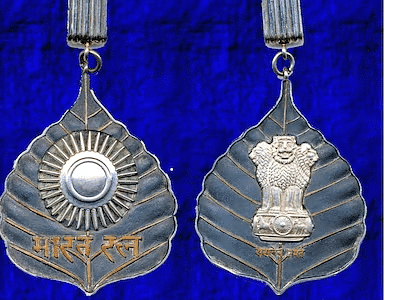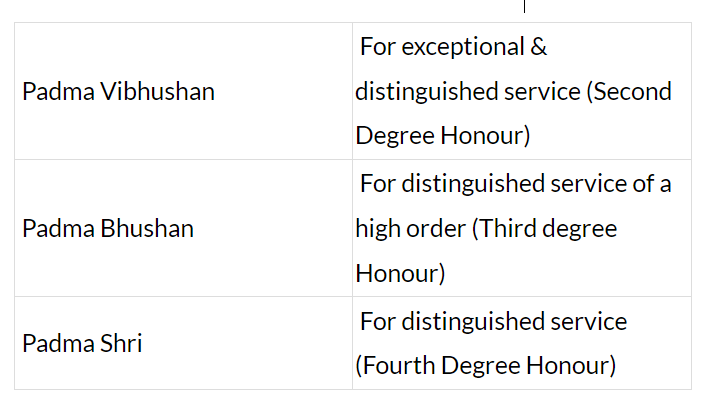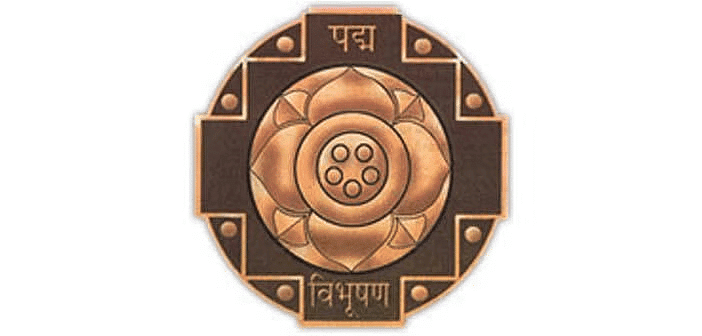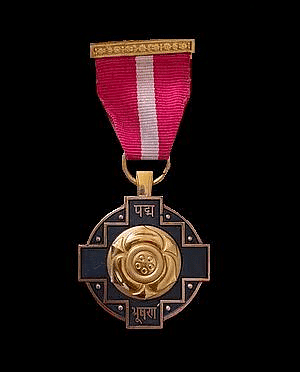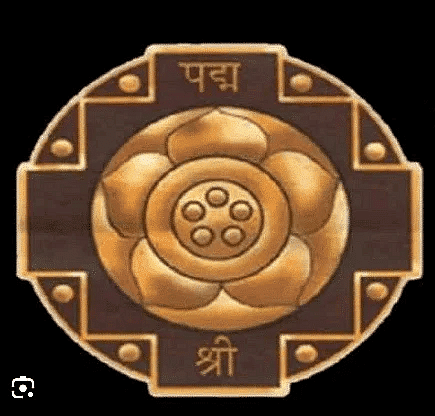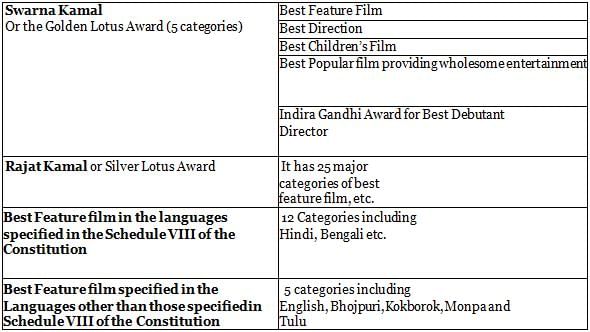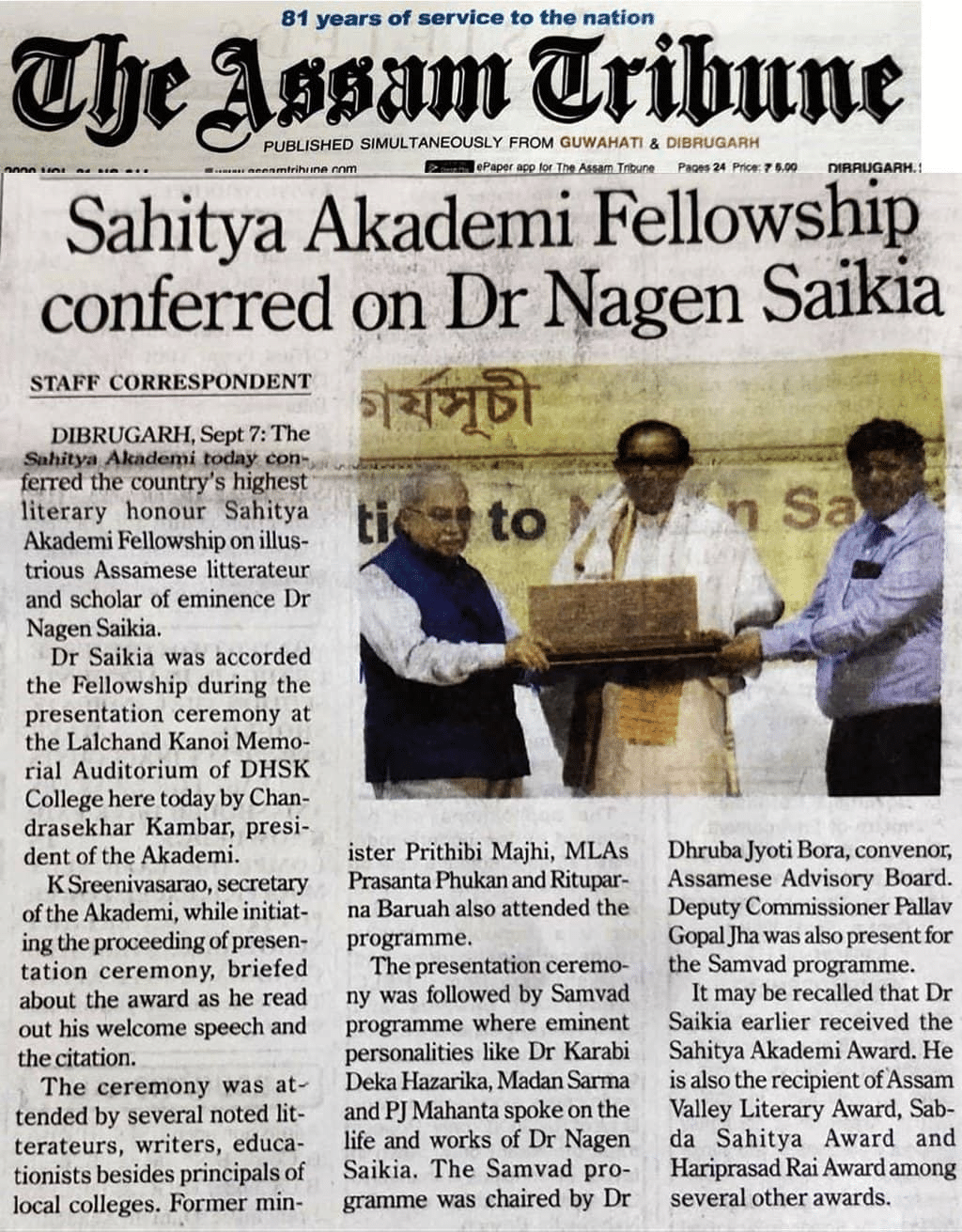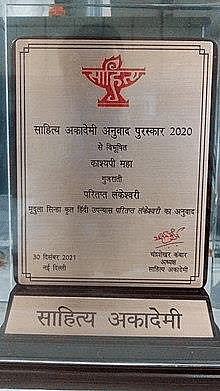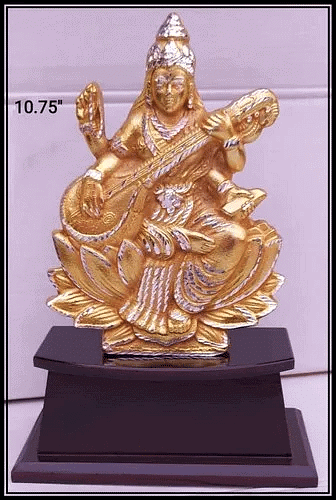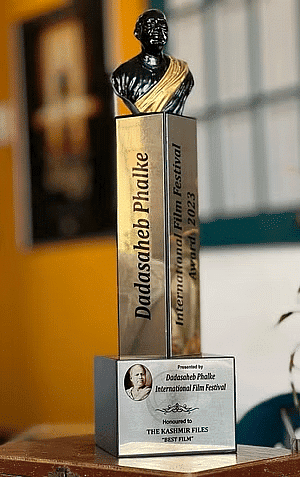Nitin Singhania Summary: Awards And Honours | Famous Books for UPSC Exam (Summary & Tests) PDF Download
| Table of contents |

|
| Introduction |

|
| Awards given by the Government of India |

|
| National Film Awards |

|
| Sahitya Akademi Awards |

|
| Other Literary Honours |

|
Introduction
Awards and honors are like special prizes given to individuals or groups to appreciate and recognize their outstanding work. In the cultural world, it's important that talented artists, writers, and creative people receive these awards as a way of saying "good job."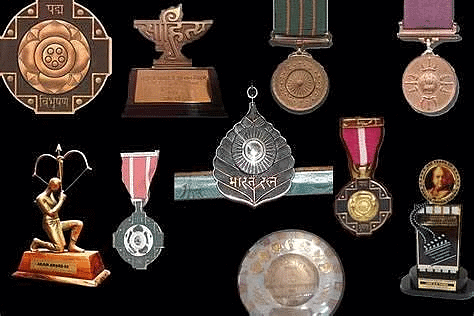 Various Awards of India
Various Awards of India
The Government of India gives many such honors each year to those who have done exceptionally well in their respective fields. This chapter is split into two parts: first, awards from the Indian government, and second, awards from other important organizations.
Awards given by the Government of India
Bharat Ratna
This title means 'Jewel of India' and is the highest civilian award in India.
- Purpose: It is given to exceptional individuals who have excelled in various fields.
- Inception: Started in 1954, originally recognizing achievements in art, science, literature, and public service.
- Expanded Criteria: In December 2011, the criteria were expanded to include excellence in 'any field of human endeavor.'
 Bharat Ratna Award
Bharat Ratna Award - Recommendations and Selection: The Prime Minister suggests candidates to the President, who selects up to three recipients annually.
- Recognition: Awardees receive a peepal-leaf-shaped medal and a certificate (sanad), but no monetary reward.
- Ranking: According to the Indian Order of Precedence, Bharat Ratna recipients are ranked seventh.
- Usage Restrictions: The award cannot be used as a prefix or suffix to the recipient's name, as per Article 18(1) of the Constitution.
Padma Awards
These awards started in 1954 and are given to individuals who have done exceptional work in various fields like sports, art, social work, civil service, literature, education, public affairs, science and technology, trade, and industry.
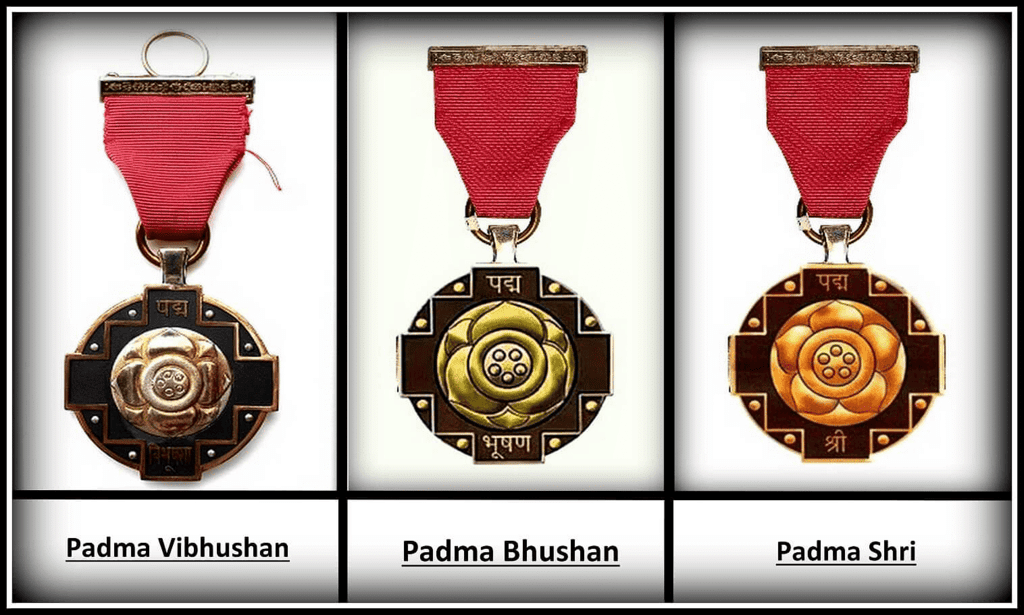 Padma Awards
Padma AwardsCategories of Recognition: The awards cover a range of areas, acknowledging outstanding services in different sectors.
Announcement on Republic Day: The names of the awardees are revealed every year on Republic Day.
Rules for Padma Awards:
- Time Gap: If someone receives a lower-level Padma award, they can only be considered for a higher-level award after five or more years since the last recognition.
- Posthumous Awards: Usually, the awards are not given posthumously, but exceptions can be made in special cases that highly deserve recognition.
- Public Service Element: The achievements of the person selected should not just be based on excellence in any field but should also include an element of public service.
- Eligibility for Government Servants: Government servants, except for doctors and scientists, are generally not eligible for these awards.
Emphasis on Excellence Plus: The selection is not solely based on excellence but on excellence plus an element of public service.
Exclusion of Government Servants: Government employees, except doctors and scientists, are usually not considered for these awards.
 3 Categories of Padma Awards
3 Categories of Padma Awards
Padma Vibhushan
 Padma Vibhushan
Padma Vibhushan
Type of Award: It's the biggest honor in India, the second-best for regular people.
What Recipients Get: People who get this award get a special certificate and a medal.
About the Medal: The medal has a pretty lotus flower in the middle. The words 'Desh Seva,' meaning 'Service to the Nation,' are on it. The lotus is a symbol of purity and the words remind everyone about serving the country.
Padma Bhushan
 Padma Bhushan
Padma Bhushan
Type of Award: It's a significant award in India, the third highest for regular people.
Who Gets It: People who have made India proud globally get this award.
Awarding Ceremony: The President of India gives the award in a big ceremony at the Rashtrapati Bhawan in March or April.
Padma Shri

Padma Shri
Padma Shri
Type of Award: It's an important award in India, the fourth highest for regular people.
Who Gets It: People who make a big impact in areas like arts, literature, sports, politics, and more receive this award.
What They Get: Winners don't get money but receive a certificate and a medal. The medal has a three-leafed flower on one side and the words 'Padma Shri' (like Mr. or Ms.) in Devanagari script on the other side.
National Film Awards
Type of Awards: These are important awards for outstanding movies. They happen every year and began in 1954.
Organizing Body: In 1973, the Directorate of Film Festivals started managing these awards. A national panel chosen by the government decides the winners.
Presentation: The President of India hands out the awards, and the winning films are shown to the public.
 National Film Awards
National Film AwardsScope: These awards aren't just for Bollywood; they also recognize the best films from various regions in India.
 Following are the five major categories, which receive this award
Following are the five major categories, which receive this award- Special Award: In the National Film Awards, there's a special honor called the Dadasaheb Phalke.
- Lifetime Achievement Award. It goes to people who've dedicated their entire careers to Indian Cinema.
- Other Categories: Apart from regular film awards, there are special categories for non-feature films. Awards like Best Book on Cinema and Best Film Critic on Cinema are also given.
Sahitya Akademi Awards
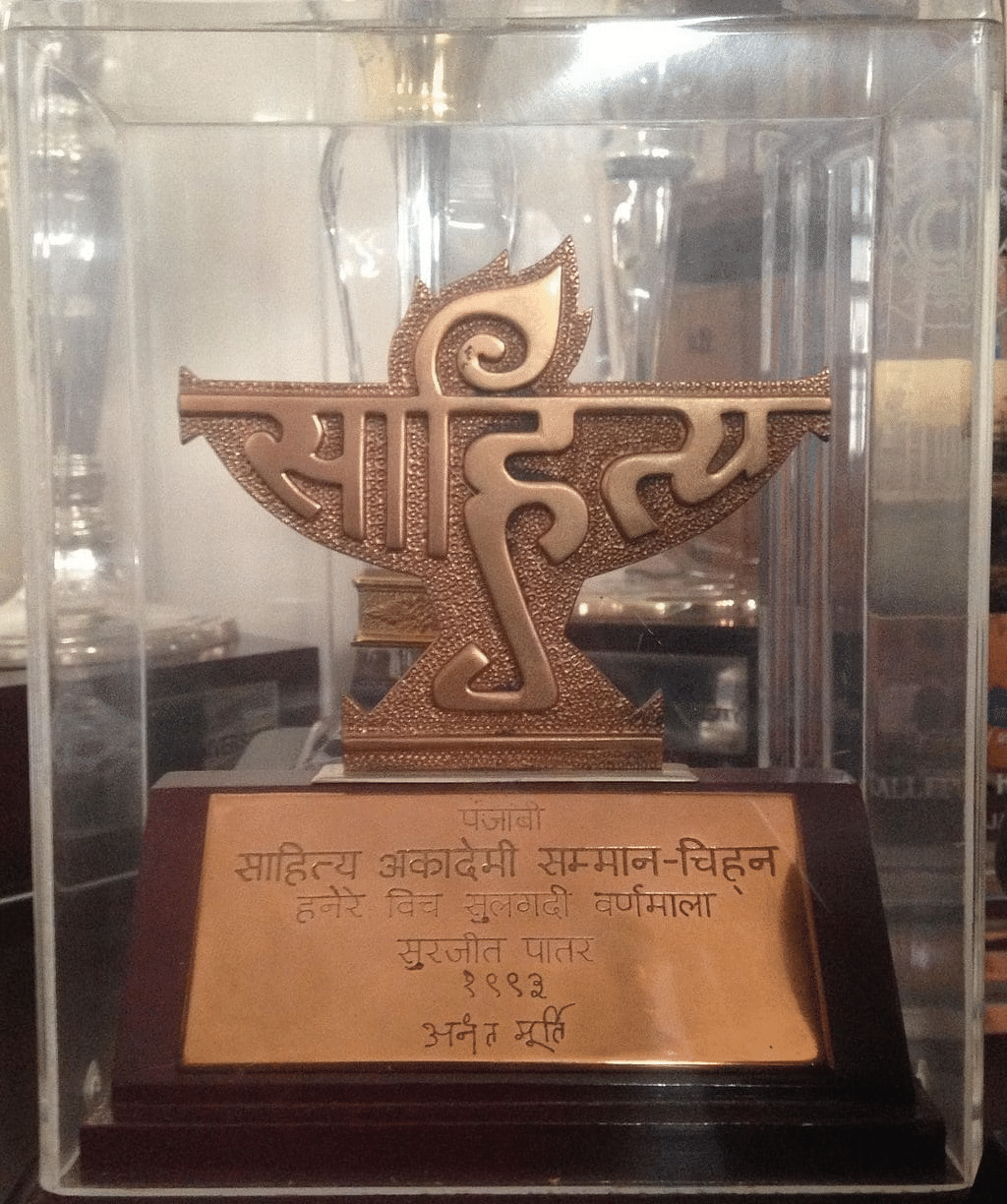 Sahitya Akademi Awards
Sahitya Akademi AwardsLiterary Excellence Award: This honor is for those who shine in literature. It started in 1954 and is given by the 'Sahitya Akademi,' our National Academy of Letters.
Eligibility: It's given yearly to writers who excel in creating new trends through their works, whether in prose or poetry. They can write in any of the 24 major languages recognized by the Akademi.
Languages Recognized: Apart from the 22 languages mentioned in the Indian Constitution, English, and Rajasthani are also recognized.
Prize Details: The award comes with a cash prize of 1 lakh rupees and a plaque with 'Sahitya' written in Devanagari script. The renowned Indian filmmaker Satyajit Ray designed the plaque.
1959Ramdhari Singh DinkarHindi1960R.K NarayanEnglish1968Harivansh Rai BachchanHindi1956Amrita PritamPunjabi1988Vikram SethEnglish1975Kaifi AzmiUrdu2004Ghulam Nabi FiraqKashmiri1967Buddhadeb BasuBengali2012K. SatchidanandanMalayalam
Most outstanding recipients of this award
Other Literary Honours
Sahitya Akademi Fellowship
 Media coverage of Sahitya Akademi Fellowship
Media coverage of Sahitya Akademi Fellowship
- This is the highest honor from the Sahitya Akademi.
- It's given to individuals for their outstanding contributions to literary arts.
- They choose 'Fellows and Honorary Fellows' for this recognition.
- Becoming a fellow is considered a higher honor than receiving the Sahitya Akademi award.
Bhasha Samman
Sahitya Akademi annually presents the Bhasha Samman awards. These awards specifically acknowledge the contributions of writers to Indian languages not covered by the 24 major languages recognized by the regular Sahitya Akademi awards.
- The awards recognize contributions to classical and medieval literature.
- The Bhasha Samman prize package includes a plaque and a cash prize of one lakh twenty thousand rupees.
- The initial recipients of the Bhasha Samman awards were distinguished individuals such as Sri Dharikshan Mishra for Bhojpuri, Sri Chandra Kanta Mura Singh for Kokborok, Sri Bansi Ram Sharma, and Sri M.R. Thakur for Pahari (Himachali). Additionally, Sri K. Jathappa Rai and Sri Mandara Keshava Bhat received recognition for their contributions to Tulu.
- These awards are bestowed upon individuals in acknowledgment of their significant contributions to the development of their respective languages.
Translation Awards
 Sahitya Akademi Translation Prize
Sahitya Akademi Translation Prize
- The Sahitya Akademi awards are also given to those attempting translations of major works.
- These translations are specifically targeted towards the 24 major languages recognized by the Akademi.
- Special importance is placed on translations of ancient and medieval literature.
- The prize for such translations includes a cash award of fifty thousand rupees and a plaque.
Jnanpith Award
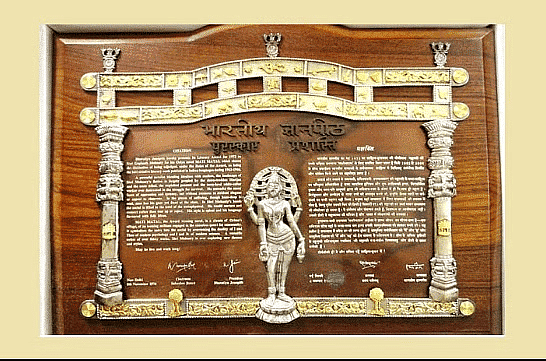 Jnanpith Award
Jnanpith Award- The Gyanpeeth Award (Seat of Knowledge) is given for outstanding literary achievement.
- It was established in 1961 by the Bharatiya Jnanpith, a trust associated with the Jain family known for founding The Times of India newspaper.
- The award is bestowed upon Indian citizens who excel in literature in one of the 22 languages listed in Schedule VIII of the Indian Constitution, as well as English.
- Recipients receive a prize that includes a plaque, a cash award of 11 lakh rupees, and a bronze statue of Goddess Saraswati.
- Notably, this award is not given posthumously, and it covers a total of 23 languages for eligibility.
Saraswati Samman
- The Saraswati Samman is an annual award recognizing outstanding prose or poetry in any of the 22 Indian languages listed in Schedule VIII of the Indian Constitution.
- It is named after the Indian goddess of learning and is considered one of the highest literary awards in India.
 Sarawati Award
Sarawati Award - Instituted in 1991 by the K. K. Birla Foundation, the award includes a prize of Rs 15 lakh, along with a citation and a plaque.
- The selection process involves considering literary works published in the previous ten years.
- A panel, including scholars and former award winners, is responsible for choosing candidates for the Saraswati Samman.
Vyas Samman
Vyas Samman
- The Vyas Samman is a literary award in India, initiated in 1991.
- It is presented annually by the K. K. Birla Foundation.
- The award comes with a cash prize of Rs. 250,000.
- Eligibility for the award requires that the literary work must be in the Hindi language and should have been published within the past 10 years.
Dada Saheb Phalke Awards
- The Dada Saheb Phalke Award is India's highest cinema award, introduced in 1969.
- It honors Dada Saheb Phalke (1870–1944), a legendary filmmaker known for India's first full-length feature film, Raja Harishchandra (1913).
 Dada Saheb Phalke Award
Dada Saheb Phalke Award - The award is presented by the Directorate of Film Festivals, an organization under the Ministry of Information and Broadcasting.
- It is given for an outstanding contribution to the growth and development of Indian cinema.
- A committee of distinguished individuals from the Indian film industry selects the awardee.
- As of 2017, the award includes a Swarna Kamal (Golden Lotus) medallion and a cash prize of Rs 10 lakhs.
The Fukuoka Prize

- The Fukuoka Prize is an award created by the city of Fukuoka in Japan to recognize exceptional efforts in preserving or contributing to Asian culture.
- It has three categories: Grand Prize, Academic Prize, and Arts & Culture Prize.
- Some Indian recipients include A.R. Rahman (2016), Ramchandra Guha (2015), Romila Thapar (1997), and Amjad Ali Khan (2004).
|
786 videos|1239 docs|633 tests
|
FAQs on Nitin Singhania Summary: Awards And Honours - Famous Books for UPSC Exam (Summary & Tests)
| 1. What are the National Film Awards given by the Government of India? |  |
| 2. What are Sahitya Akademi Awards? |  |
| 3. What are some other literary honors in India? |  |
| 4. Who is Nitin Singhania and what awards and honors has he received? |  |
| 5. Is there any information about the UPSC exam in the article? |  |

